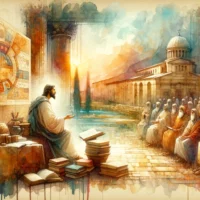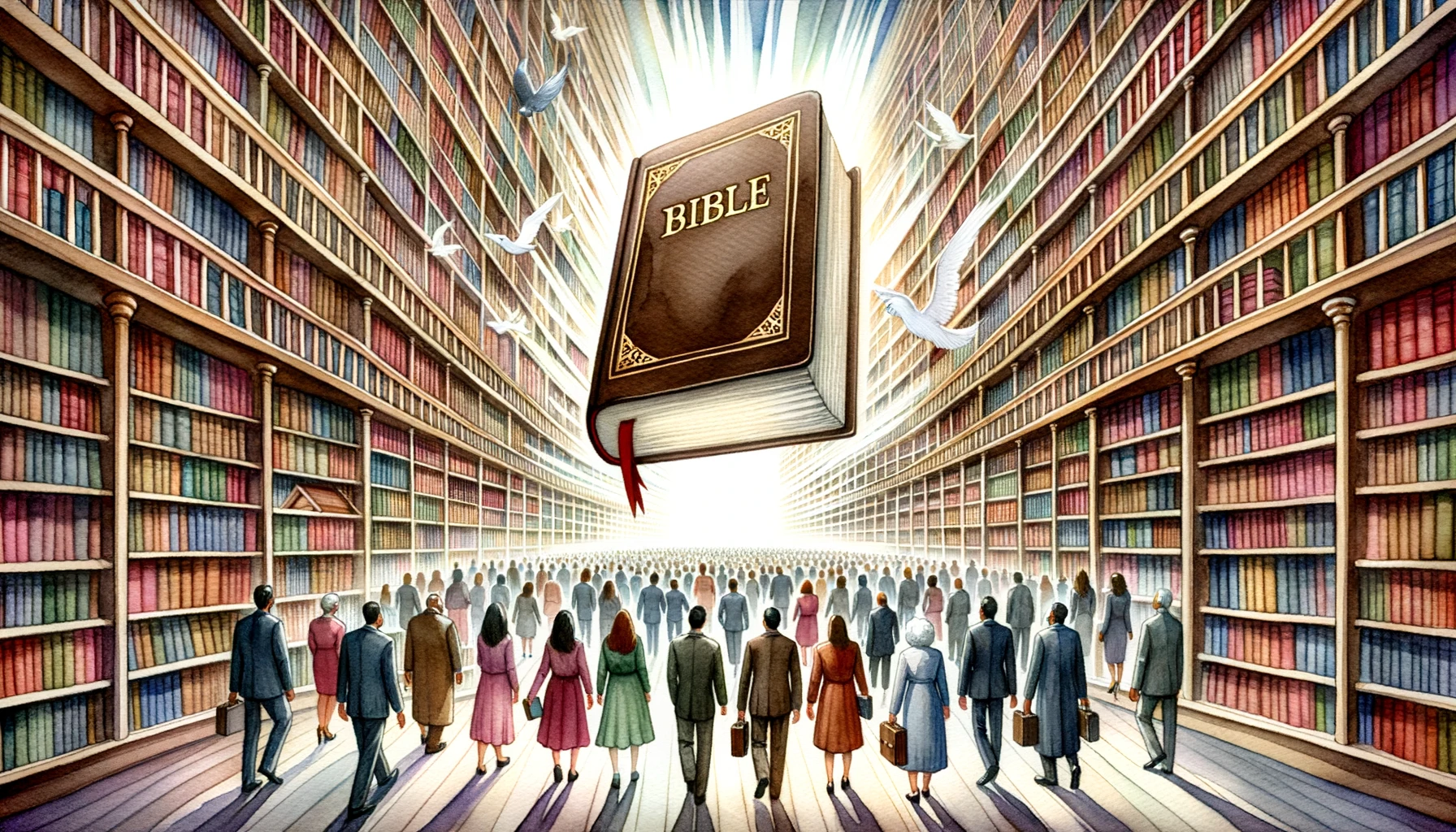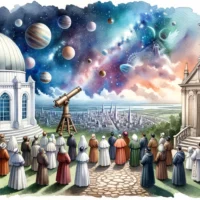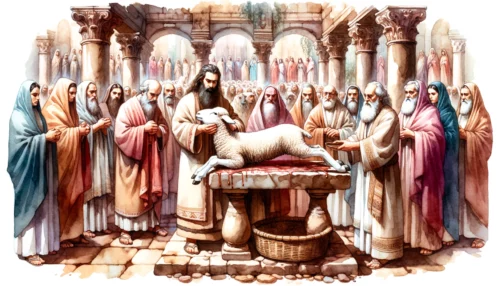The Bible, a divine composition filled with wisdom, truth, and the story of human redemption, is a book that can transform lives. However, with 66 books, written over a span of 1,500 years by multiple authors, it can appear intimidating to first-time readers. Many who wish to explore its depth often wonder where to begin. Our aim is to help guide you to a starting point that aligns with your spiritual needs and paves a way for a meaningful engagement with God’s Word.
Understanding the Structure of the Bible: A Brief Overview
The Bible isn’t a single book but a library of 66 different books, penned by various authors over many centuries. It’s divided into two main sections, namely the Old Testament and the New Testament.
The Old Testament, the first section of the Bible, contains 39 books. These books can be categorized into five groups: The Law (or Torah), History, Wisdom Literature, Major Prophets, and Minor Prophets.
The Law, which includes books from Genesis to Deuteronomy, is foundational, as it presents the creation account, the early history of humanity, the calling of Abraham and the formation of the nation of Israel, as well as the laws given to the Israelites. The Historical books, Joshua through Esther, narrate the story of the Israelites from their entrance into the promised land to their subsequent exile. The Wisdom Literature includes Job, Psalms, Proverbs, Ecclesiastes, and Song of Solomon. These books provide a rich source of reflections on human existence, morality, and the nature of God. The books of the Major and Minor Prophets, Isaiah through Malachi, comprise of prophecies concerning Israel, God’s judgment, and promises of future restoration.
The New Testament, the second section of the Bible, consists of 27 books. These are divided into four Gospels, one book of history (Acts), 21 Epistles (letters), and one book of prophecy (Revelation).
The Gospels—Matthew, Mark, Luke, and John—recount the life, death, and resurrection of Jesus Christ from four unique perspectives. Acts, the only historical book in the New Testament, tells the story of the early Christian church and the spread of the Gospel after Jesus’ ascension. The Epistles, Romans through Jude, are letters written by early Christian leaders to communities or individuals, providing instructions, encouragement, and theology. Revelation, the final book of the Bible, is a prophetic work filled with imagery and symbolism, revealing the end times and the ultimate victory of God.
It’s clear that the Bible is a complex work, but this should not be a cause for intimidation. Instead, think of it as a rich tapestry, with each thread contributing to the broader narrative of God’s redemptive plan for humanity. As you begin your journey of reading the Bible, keep this structure in mind. It will help you understand the context and the overarching themes that run throughout the text, guiding you towards a more meaningful engagement with God’s Word.
The Gospel of John: A Recommended Starting Point
The Gospel of John, one of the four Gospels in the New Testament, is often suggested as an ideal starting point for first-time Bible readers. It provides a distinctive and deep view into the life, ministry, death, and resurrection of Jesus Christ.
What sets John apart is its unique perspective. While the other Gospels—Matthew, Mark, and Luke—share many similar accounts and are known as the “Synoptic Gospels,” John provides a more thematic and interpretive presentation of Jesus’ life. It emphasizes the deity of Christ, presenting Him as the Word made flesh, the bread of life, the good shepherd, the way, the truth, and the life, and the true vine (John 1:14, 6:35, 10:11, 14:6, 15:1).
John’s Gospel begins with a profound proclamation of Jesus’ pre-existence and divinity, identifying Him as the Word who was with God and was God from the very beginning (John 1:1-5). This Gospel further provides clear explanations of key Christian concepts such as grace, truth, and eternal life, making it a fitting starting point for new readers.
John also records seven “I am” statements of Jesus, unique to this Gospel, where Jesus reveals aspects of His identity and mission. These include phrases like “I am the light of the world,” “I am the resurrection and the life,” and “I am the way, the truth, and the life” (John 8:12, 11:25, 14:6). Through these statements, readers gain a deeper understanding of Jesus’ divine nature and His mission of salvation.
Reading John, you’ll encounter intimate dialogues, like the one between Jesus and Nicodemus about the necessity of being born again (John 3:1-21), or the conversation with the Samaritan woman at the well, revealing Christ as the living water (John 4:1-26). These personal encounters highlight the transformative power of Christ’s teachings.
John’s Gospel ends with a powerful affirmation of its purpose: “These are written that you may believe that Jesus is the Messiah, the Son of God, and that by believing you may have life in his name” (John 20:31). This very purpose aligns with the reason many begin reading the Bible—to know Jesus and find life in Him.
Starting your Bible journey with the Gospel of John means starting at the heart of the Christian faith—knowing Jesus. As you read, you’ll encounter the life and teachings of Jesus in a way that is profound yet accessible, setting a solid foundation for your subsequent explorations of the Bible.
Other Accessible Starting Points: The Psalms, Proverbs, and Luke’s Gospel
While the Gospel of John is an excellent starting point, there are other books of the Bible that also offer accessible entry points for new readers—The Psalms, Proverbs, and the Gospel of Luke.
The Psalms, a book in the Old Testament, is a collection of 150 songs and poems that express a wide range of human emotions—from joy and praise to sorrow and lament. Reading the Psalms provides an opportunity to resonate deeply with the heartfelt prayers and praises of individuals like David, Solomon, and Asaph. For example, Psalm 23, one of the most well-known chapters, beautifully portrays God as a caring shepherd and a gracious host (Psalm 23). Engaging with the Psalms can foster a deeper emotional connection with the Biblical text and provide words for personal prayer and worship.
Proverbs, another book from the Old Testament, is a compilation of wise sayings, mainly attributed to King Solomon. This book offers practical wisdom on how to live a life pleasing to God, covering topics such as relationships, honesty, hard work, and the use of the tongue. For example, it begins by declaring the importance of wisdom and the fear of the Lord as the foundation of knowledge (Proverbs 1:7). Reading Proverbs can equip new readers with valuable insights for godly living.
The Gospel of Luke, a New Testament book, is another excellent place to start. Written by Luke, a physician and the only Gentile author in the New Testament, this Gospel is characterized by its detailed and orderly account of Jesus’ life, emphasizing His compassion towards the poor, the marginalized, and sinners. Unique to Luke are parables such as the Good Samaritan and the Prodigal Son (Luke 10:30-37, 15:11-32), which capture the heart of God’s mercy and love.
Choosing between John, Psalms, Proverbs, and Luke depends on personal preference and spiritual needs. If the desire is to start with the life of Jesus and His teachings, then John or Luke are wonderful choices. If the aim is to connect emotionally with God or seek wisdom for daily living, then Psalms or Proverbs may resonate more. Regardless of the starting point, the key is to approach the Bible with a prayerful heart, seeking to know God and His truth. Remember, the journey through the Scriptures is not a race, but a steady walk of discovery and transformation.
Walking the Path of Scripture
Finding the right place to start reading the Bible can seem like a challenge, but knowing a little more about its structure and understanding the appeal of various starting points can make the journey less daunting. Whether you choose to begin with the Gospel of John, the wisdom of Proverbs, the heartfelt Psalms, or the compassionate narrative of Luke’s Gospel, the Bible unfolds as a profound narrative of God’s love and redemption.
For further reflection, consider these questions:
- What are you seeking in your journey through the Bible? Is it a deeper understanding of Jesus, emotional connection, wisdom for life, or something else?
- What are some ways you can make Bible reading a regular part of your daily routine?
- How can you engage with the Bible not just as a text, but as a space to encounter God and hear His voice?
With every page you turn, remember you’re not merely reading a book. You’re stepping into a divine conversation, hearing God’s voice echoing through history, speaking into the hearts and lives of people today, just as He did thousands of years ago. So, pick up that Bible, find your starting point, and begin the adventure. God is waiting to meet you there. Let His Word illuminate your path, enrich your mind, and transform your heart. After all, the Bible is more than just words on a page—it’s a living, breathing testament of God’s love for humanity. So, step boldly into this journey, and let God’s Word guide your steps.














